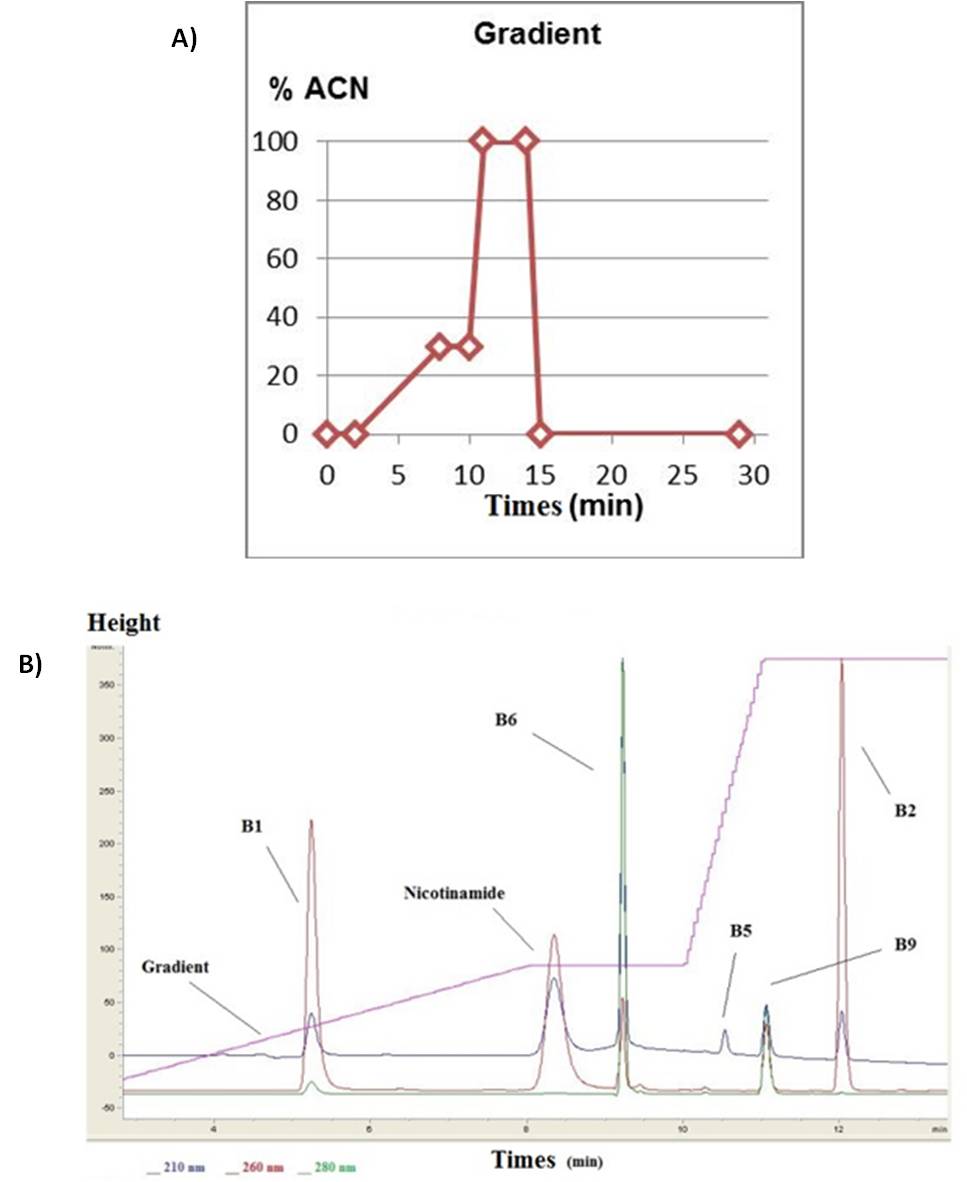|
Introduction
The laboratory of "Functional Biology, Insects and Interactions" (FB2I) studies the physiology of the interactions among insects such as the pea aphid, Acyrthosiphon pisum (Sternorrhyncha, Aphididae). This insect pests of many vegetables of agronomic interest. It feeds on phloem sap. This food source is low in vitamins and essential amino acids. Physiological studies have shown that there is a mandatory symbiosis between aphids and bacteria specializing in nutritional supplementation, Buchnera aphidicola.This symbiosis plays an important role in metabolism, development, reproduction and survival of the insect. A method of quantifying the amino acid exists in the laboratory however, the B vitamin are not quantified yet. The aim of the work is to develop a high performance Liquid Chromatography method coupled with UV-Visible detector to quantify six B vitamin.
Experimental conditions
Six B vitamin as (Thiamine hydrochloride (B1), Nicotinamide, Pyridoxine (B6), Pantothénic acid (B5), Folic Acid (B9) and Riboblavin (B2)) are separated using a 5 μm, 250×4,6 mm Jupiter C18 column on an HPLC Agilent system. The detection system is a DAD detector (three wavelengths: 210 nm for B5, 260 nm for B1, B2 and Nicotinamide, and 290 nm for B6 and B9).
These wavelengths correspond to the absorption maximum of each vitamins determined from UV-visible spectra.
The method uses an external calibration with a 5 level linear regression. The standard solution is prepared in NaHCO3 because B2 and B9 have very low solubility limits in water. This solution is prepared daily and is kept away from light.
Results
As shown on figure 1, we obtain six peaks, one for each vitamin. The peak areas of the six standard chromatograms are used to make a calibration curve. Then, this curve is used to quantify the vitamins.
Conclusion
To conclude about this work, B vitamins have been optimized with a 0, 01% TFA in H2O and ACN gradient eluent. The analysis time is 29 min.
|
|


A) Gradient (%ACN= f (time))
B) Chromatogram of B vitamins (standard) HPLC flow rate = 0.76 mL.min-1; run time = 29 min; Mobile phases: A: H2O/TFA (0,01%) B: ACN); Vinj = 10µL
|




